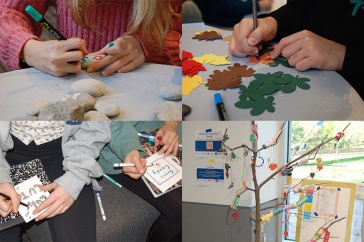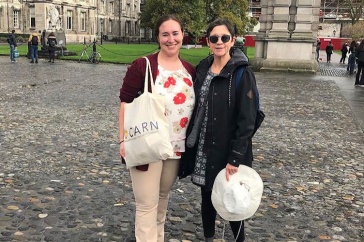Great literature asks readers to think, and in the process, it often asks us to think about weighty topics. From the use of the N-word in To Kill a Mockingbird to investigation of gender transition in I Am J to awakening sexuality in Their Eyes Were Watching God, literature asks us to lean into topics that often feel taboo.
When those topics are brought into the classroom, conversations can get complicated. Consider just one aspect of discussion: familiarity with a topic like race. Some students might have a lot of experience talking about race. Others might have some awareness of race but feel like it’s something they’re not supposed to talk about. Still others might have never even thought about race. And those students are probably all in the same classroom.
In consideration of this conundrum, the Community Literacy Center launched a three-week book club this fall, Literary Explorations in Critical Times. Participants in the book club read Kekla Magoon’s How it Went Down and then discussed the book using protocols for discussion and frameworks for talking about differences that they could then transfer to the works they read in their classes.
We opened the book club by using a jigsaw protocol to analyze Boler & Zembylas’s (2003) “Discomforting Truths: The Emotional Terrain of Understanding Difference.” In groups, we sifted sections of the article into haiku and then presented our analysis of the passages that each haiku represented[1]. For example, one group wrote:
Discomfort comes from
Questioning hegemony
And binaries
The group then shared that, in their article, Boler & Zembylas discuss the ways that exploration of topics like race, gender, class, and sexuality can cause physical discomfort in both students and teachers. One of Boler & Zembylas’s suggestions for considering complicated topics is to examine binaries and the places in between binaries.
After reading the article, we considered ways that a pedagogy of discomfort can function both to anchor and to provide a lens for discussion. For example, when establishing ground rules for discussion, teachers can include expectations of discomfort and specific ways to respond to that discomfort as an anchor for students. Teachers can use a pedagogy of discomfort as a lens for analyzing literature by observing potential binaries in a text and considering the places of ambiguity in the writing.
At our second meeting, the book club explored the nature of the multiple voices in How it Went Down. We used body biographies to learn more about three different characters. To make our body biographies, we drew images of the characters, placing things the characters said about themselves inside the body and things others said about the characters outside the body. By incorporating art into our analysis of the book, we were able to tap into other ways of examining difference.
At our third meeting, this week, we plan to use a Tea Party Protocol a Socratic Seminar to discuss the book. In addition to talking about the book through different protocols, throughout our meetings, we also generated lists of resources via a shared Google document that everyone in the group has access to after we’re all done. That way, the members of the group can pick and choose the resources that are useful to them in their classrooms.
In responding to the call for teaching diverse books in children’s literature, NH educators sometimes find ourselves in a very particular place: engaging in important, text-driven, complicated conversations about race, class, gender, sexuality, and more with young people. Over the past three weeks, this book club has given us the opportunity to hone our skills in that area.
The Community Literacy Center will be running another 3-week book club this spring. If you’d like to join our mailing list to be notified about upcoming events, click here.
Bibliography
Boler, M., & Zembylas, M. (2003). Discomforting truths: The emotional terrain of understanding differences. In P. Trifonas (Ed.), Pedagogies of difference: Rethinking education for social justice. New York, NY: RoutledgeFalmer.
[1] In the group, we took a few minutes to talk about the fact that we were bending the purposes of haiku for our discussion. The exercise was useful as a way to identify the most salient parts of the passages, but we were aware that our haiku did not adhere to the expectations of the form.
-
Written By:
Bethany Silva | Education | bethany.silva@unh.edu | (603) 862-3733



















































